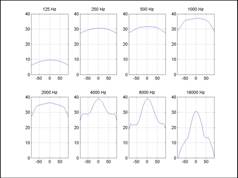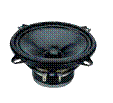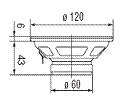|
|
|
So at the end our
choice fell on what was maybe the simples solution one could ever imagine,
even without all the discussion made so far. A single diver extended range,
which provides for an acceptable coverage of the area and of the frequency
spectrum as well. I measured the directivitivity of the speaker, already
inserted in the array, and these are the result:
|
|
in axis tranfer
function: it is not flat, but it radiates sufficiently high at frequencies up
to 10-15 KHz. With so many speaker and FIR filtering I think we can reach a
transfer function in the focus that is more than flat.
|
|
Here we have
emission angle vs frequency, and here the polar pattern in octaves, you can
see it as section of this surface plot.
|
|
This is the curve
that describe the reconstruction condition antialiasing. In theory we shoul
have yellow inside this “funnel” and blue outside. This doesn’t happens, we
have also lobes here.. But there is a general matching which makes us
optimistic.
|





























